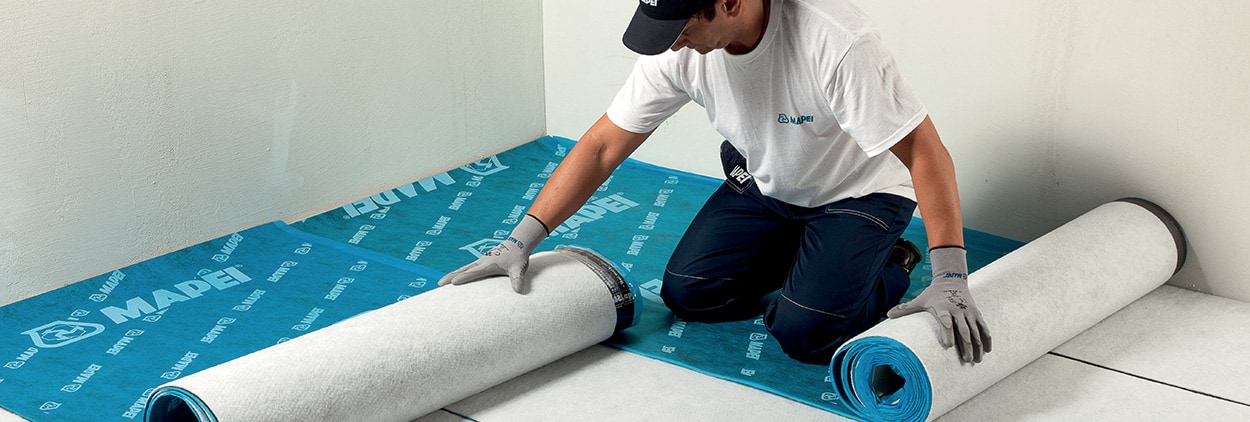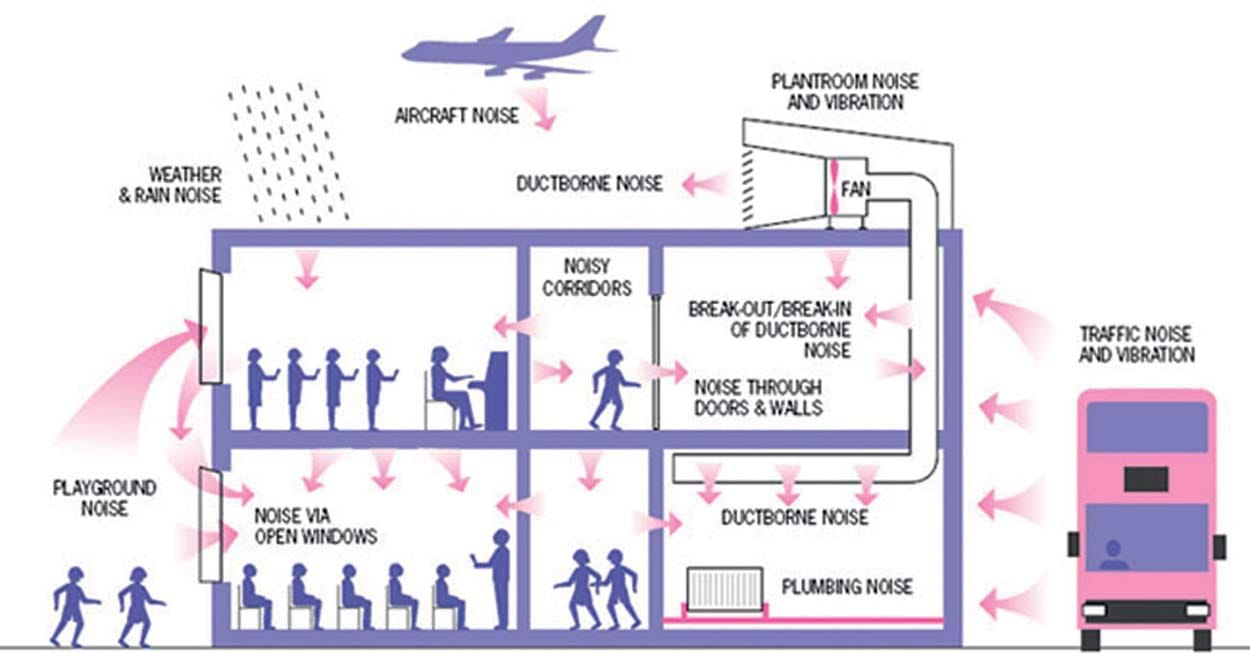
Soundproofing and living comfort
Living, staying and working in acoustically comfortable surroundings has become an increasingly important factor.
Sound absorption and soundproofing: these two concepts often cause confusion: sound-absorbing materials are chosen to improve the quality of a room’s acoustics (such as a concert hall), whereas materials with soundproofing characteristics are used to protect living spaces from external noises (noises generated in a home, for example). An in-depth analysis on soundproofing criteria with Mapei products.
When we talk about insulation we normally think about thermal insulation, but protection against noise has now become an important factor in order to reach a good level of comfort in our homes, our places of work or when we are on holiday. The types of noise that disturb us may come from an external source (such as traffic, bars and restaurants open during the night or machinery) or from an internal source (such as the echo of heels on floors, voices from our neighbours or noisy plant systems) and have a detrimental effect on the acoustic comfort of the surroundings we live and work in. Over time, this sensation affects our sense of well-being, which can make us irritable and, in the long run, cause stress and make us feel more tired. Each country has its own specific set of regulations to determine the passive acoustic requirements of buildings according to their area of use – schools, hospitals, homes – and according to the type of noise.
Norms and standards indicate the values (minimum and maximum) in Decibels (dB) for various types of noise inside buildings, such as the noise from neighbouring homes, noise from external sources, noise caused by footsteps or noise from plant systems in buildings, such as bathroom drains and lifts.
HOW TO CHOOSE A SOUNDPROOFING SYSTEM
When a sound-wave hits a surface, part of its energy is dissipated in the form of thermal energy in the wall, part of it is transmitted through the wall and is propagated in the adjoining room and part of it is reflected back towards the area it came from. It stands to reason that, the higher the soundproofing capacity of a material, the more energy it is able to absorb and neutralise. Soundproofing makes it difficult for noises to propagate by using two types of material: soundproofing materials, which have the capacity to stop noise and reflect the noise back towards the area it came from (thus avoiding the noise to spread towards the outside), and sound-absorbing materials, which can completely absorb sound energy.
It is important, therefore, to highlight the difference between sound absorption and soundproofing, which often cause confusion: sound-absorbing materials are chosen to improve the quality of a room’s acoustics (such as a concert hall), whereas materials with soundproofing characteristics are used to protect living spaces from external noises (noises generated in a home, for example). To guarantee good quality acoustics and prevent echoes, it is recommended to use sound-absorbing materials which stop sound waves from spreading: to get the best results these are used in combination with soundproofing materials. It is also important to consider a room as a system made up of several different parts: it would not be enough, for example, to soundproof just a false ceiling or one of the walls, because the other “weaker” parts of the house would allow the sound to be channelled along a different route (floors, walls, ceilings).
OUR SURROUNDINGS: HOW THEY MAY BE SOUNDPROOFED
All walls, ceilings, floors and plant systems that could potentially cause noise must be insulated and made “inoffensive”.
Walls. Apartment blocks, offices and hotels all have adjoining walls between different rooms through which sound may be transmitted.
Ceilings. Noise may also be transmitted through ceilings and, to mitigate this phenomenon, a false ceiling may be installed made from sound-absorbing panels recommended for both soundproofing and thermal insulation purposes. Since the noise of footsteps from rooms above us could propagate along walls, to increase the effectiveness of a false ceiling, the internal walls closest to the ceiling must also be included in the intervention.
Floors. In homes and buildings used for hospitality purposes, it is often necessary to limit the noise from footsteps: floors, therefore, need to be acoustically insulated by inserting soundproofing material within the flooring system. The most common methods are to lay a thermo-acoustic mat or a layer of felt to help muffle the noise.
Plant systems. Plant equipment that is running constantly, such as central heating or air-conditioning systems, can sometimes be noisy and may cause disturbance, particularly in the bedroom areas. Plant systems which function intermittently or for brief periods, such as drains and lifts, may also cause disturbance. This type of noise may be reduced by insulating pipework and air conduits with soundproofing materials.







